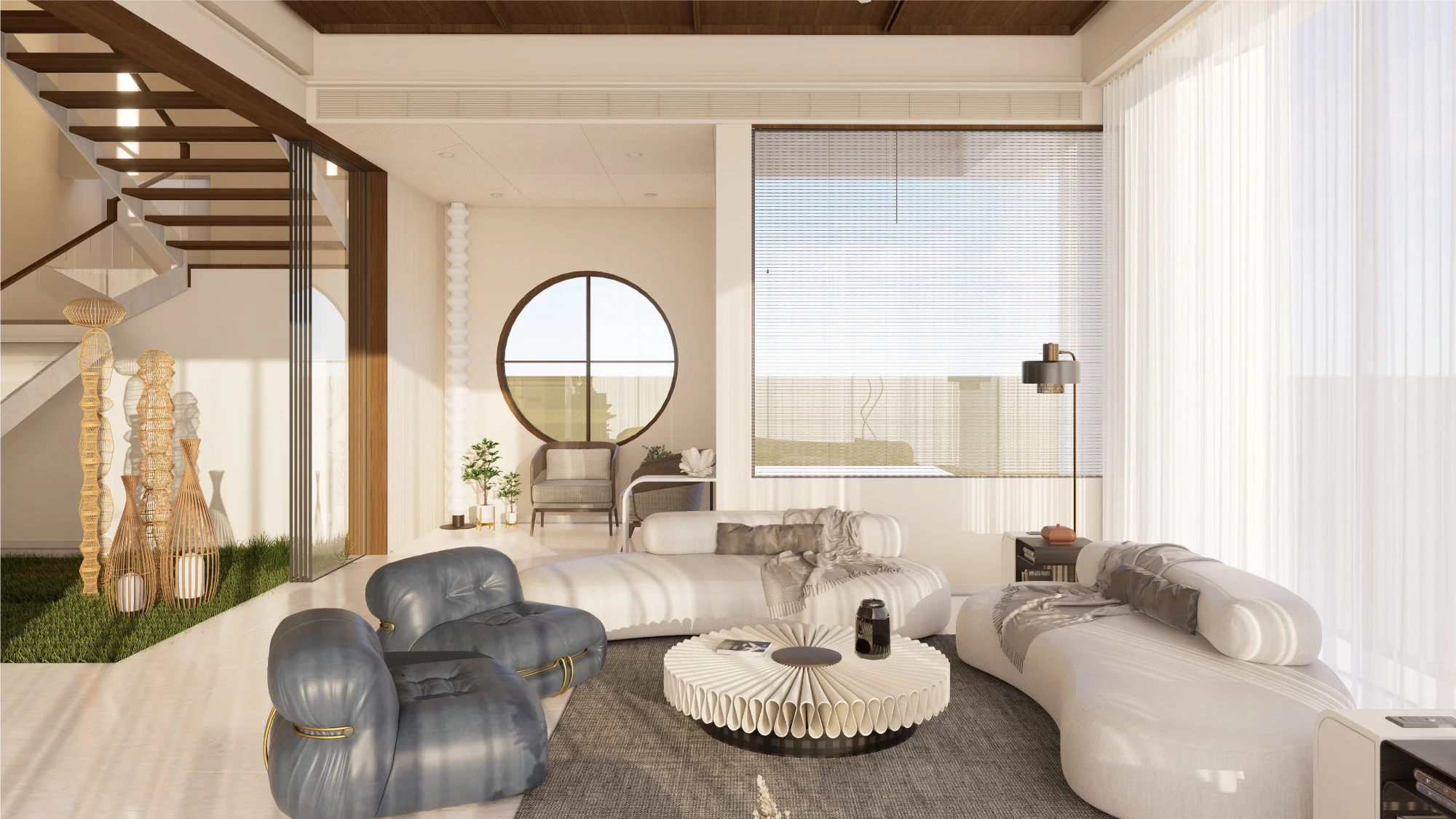8 Interior Mistakes That Shrink Small Spaces and How To Fix Them
Updated September 16, 2025

Small rooms can feel difficult to design, especially when it comes to interior design at first, but colors and furniture aren’t the last option to start and finish with. What really matters is how the space flows, how your eye travels, and how details come together to create balance.
Often, a cramped feeling comes from subtle layout choices or visual cues that quietly shrink the room. Most guides overlook these nuances, yet they make all the difference in how open and calm a space feels.
The following mistakes may seem minor, but they’re exactly what separates a room that feels crowded from one that feels expansive.
What Most Small Room Guides Miss?
Designers often talk about form and function. But in small spaces, it’s all about perception. How the eye moves across the room. Where it rests. What draws it in or pushes it out. And in that dance, even a simple choice like where you hang a mirror can throw off the entire rhythm.
Here are nine specific design decisions that can shrink space more than you’d think, along with grounded, design-smart ways to fix them.
1. Overdoing the “Leggy” Furniture Look
There’s an idea floating around that furniture with tall, exposed legs makes everything feel airier. And yes, in moderation, that works. But fill the room with nothing but slim-legged pieces, and it starts to feel jittery. Nothing grounds you. In interior design, balance is key pairing grounded pieces with lighter ones creates stability.
What to do instead:
- Mix shapes and weights. A solid ottoman or low bench gives the eye a resting point. Pairing heavier pieces with lighter ones creates balance and stability.
2. Losing Rhythm in Decor Choices
Walk into a small room filled with random textures, mismatched metals, and one-off decor items, too many objects & colors and it’s like your brain can’t relax. That’s because there’s no visual rhythm to hold things together. Successful interior design relies on rhythm and repetition, not random variety.
Try this instead:
- Pick a finish or material you love, maybe matte black, brushed brass, or warm oak. Then let it repeat itself at least three times: light fixture, cabinet handle, side table leg. The repetition does more than decorate. It calms.
3. Shadow Zones That Quietly Shrink the Room
It’s not always the furniture that closes in a space. Sometimes, it’s the shadows they bring in. Good interior design always considers how light interacts with corners and surfaces. Deep corners behind open shelving or dark recesses under pendant lights quietly eat away at the sense of openness.
Subtle fix:
- Add soft uplighting above cabinets, LED strips under shelves, or semi-gloss paint on wall trims. You don’t need harsh lighting, just enough to bounce a bit of glow back into forgotten zones.
4. Negative Space That’s Too Busy
You’ve probably heard “leave some empty space.” But what designers rarely explain is how that space works. If everything in a room competes for attention, the eye gets tired fast. It’s like standing in a crowded market with no place to pause.
Try this instead:
- Scan your room slowly.
- Does your eye feel pulled in every direction? Take one object out.
- Let a blank wall exist. Make one piece the spotlight center in the space.
5. Furniture With No Scale Story
Sometimes, everything in a room is just the same. Same height, same weight, same tone. Even if it’s all beautifully curated, the uniformity fails to create the experience your soul needs.
Designers’ trick:
- Use varied heights. A low chair, a mid-height console, and a tall floor lamp can help in creating diversion. The eye moves across levels, making the room feel layered and more spacious.
6. Ignoring the Ceiling Height
You hung your curtains high. Great. But the ceiling still feels low? That’s because you’re not using verticality as a tool. You’re treating it as a limitation. Vertical tricks are one of the most effective interior design strategies to expand a room visually.
Here’s what works:
- Try vertical paneling, floor-to-ceiling open shelving. If this isn’t your cup of tea, connect with our expert, we will sort it all for you.
- On the other note, you can also pull a series of tall framed prints gazing upward. When that happens, the volume of the room expands both visually and emotionally.
7. Mirrors That Do Too Much
We’ve all heard “use mirrors to make a room feel bigger.” But if you place it in the exact opposite of a window, you will end up creating the most uncomfortable glare or a doubled view of your laundry rack.
Better placement idea:
- Try placing a mirror perpendicular to a light source. It will catch the natural light glow without reflecting your chaos (meant to be hidden). And to add some more charm, go tall. A mirror stretching from console to ceiling behind a statement chair can double depth without doubling distractions.
8. Textures That Swallow the Light
Soft textures bring coziness, but remember adding too many dense fabrics like velvet, deep rugs or bouclé and light kills the whole mood. This makes your room heavier than it actually is. Balanced interior design combines plush fabrics with reflective surfaces for light play.
What balances it:
- Mix plush with polish.
- A brass lamp near a velvet cushion.
- A glossy tray atop a matte coffee table.
- Light reflection becomes part of your material palette.
Conclusion
Interior design is no longer about impressing visitors with clever strategies. It’s about creating rooms that make a place lively, especially when square footage is limited.
At Harikrushna Pattani & Associates, we approach small space design with smart intelligence. Not every space deserves to be stuffed. Some need less, some need free flow for movement and some needs a ceiling that gives limitless sky on top.
Our experts specialize in layouts that feel grounded, biophilic elements that screams natural than artificial, and furniture decisions that go beyond what looks good on Pinterest. Because your space should be felt before it’s seen.
